Just as Pop art arose from the appropriation of commercial imagery, cartoons, and other ephemera of consumer life, television was inspired by the imagery and ideas of Pop art. The ABC series Batman centers on the exploits of the comic-book heroes Batman and Robin as they defend Gotham City. The show premiered in 1966, the year all of the networks moved to a full-color format in prime time, and ran for three seasons. It was shot in rich, saturated hues—a direct allusion to the Pop art that was its source. With its cartoonish plots and sets, campy humor, and knowing, self-conscious style, the program also celebrated the aesthetic possibilities of television itself.
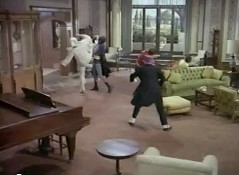
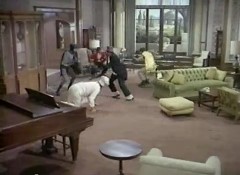
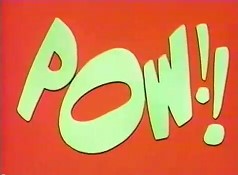
Screen captures, “Pop Goes the Joker,” Batman, ABC, 1967.
The episode “Pop Goes the Joker” depicts the city’s art world, focusing on a villain-cum-conceptual artist–who spray-paints conservative works of art–and his gullible patron, Baby Jane Towser, a thinly veiled reference to Andy Warhol’s wealthy muse, Baby Jane Holzer. The story line also speaks to television’s contradictory relationship to modern art: even as Batman makes use of the avant-garde in order to seem more hip, it ruthlessly satirizes its presumed elitism.
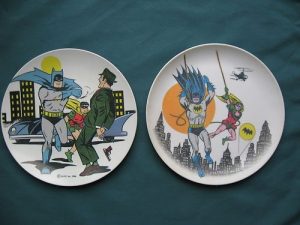
Batman plates, 1966. Melamine
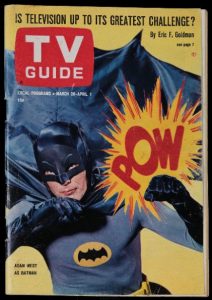
Cover for TV Guide in the style of Roy Lichtenstein, March 26, 1966
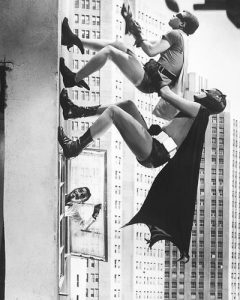
Poster for Batman and Robin in the Metropolis, ABC, c. 1966
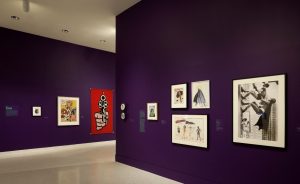
Installation view, Revolution of the Eye, NSU Art Museum Fort Lauderdale, October 2015. Courtesy of NSU Art Museum: Art that influenced the Batman TV series: (second from left to right) Roy Lichtenstein, Sweet Dreams, Baby! 1965. Silk screen on paper print. Collection NSU Art Museum, Fort Lauderdale. Roy Lichtenstein, Pistol, 1964. Felt. The Museum of Modern Art, New York. Gift of Philip Johnson, 1965